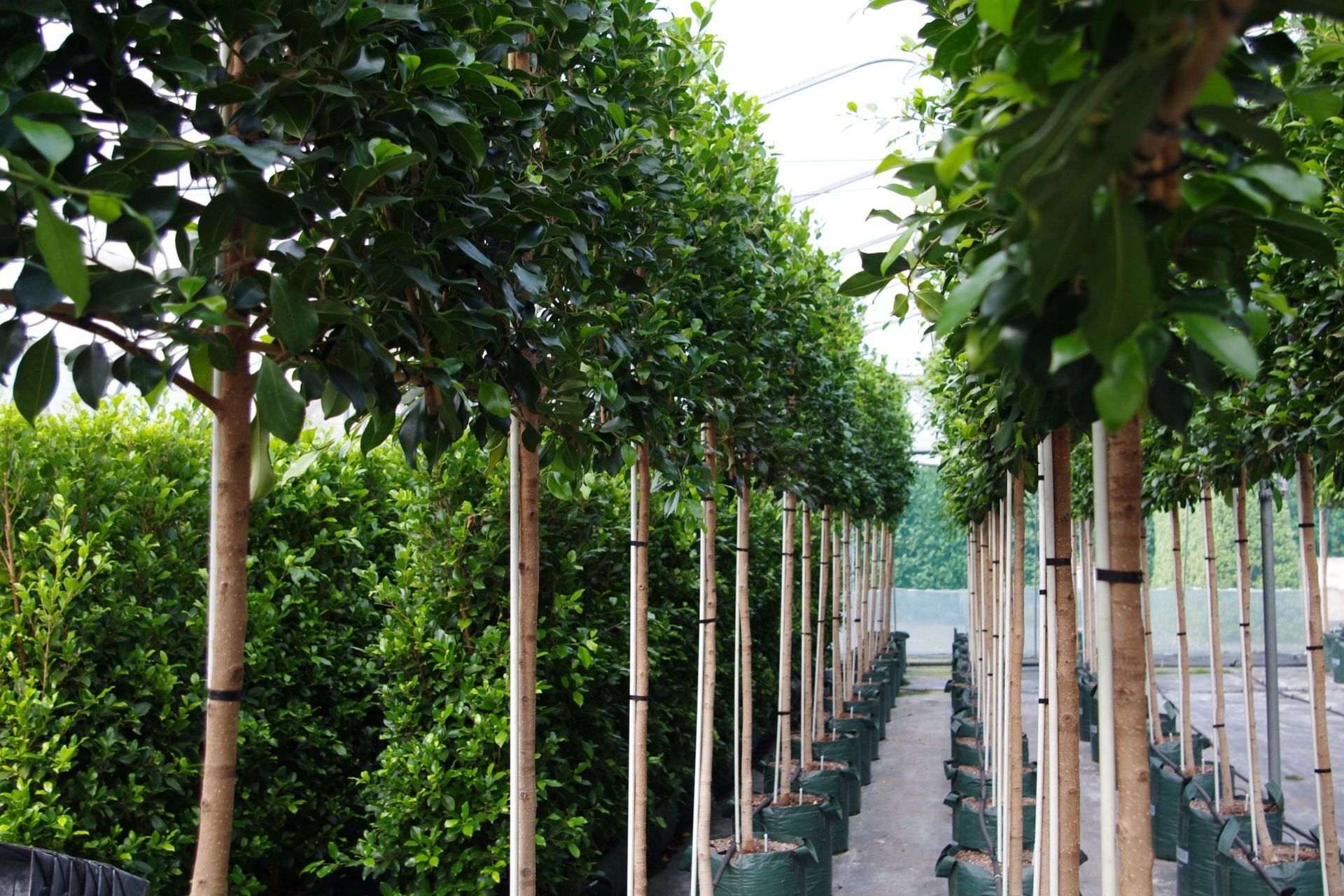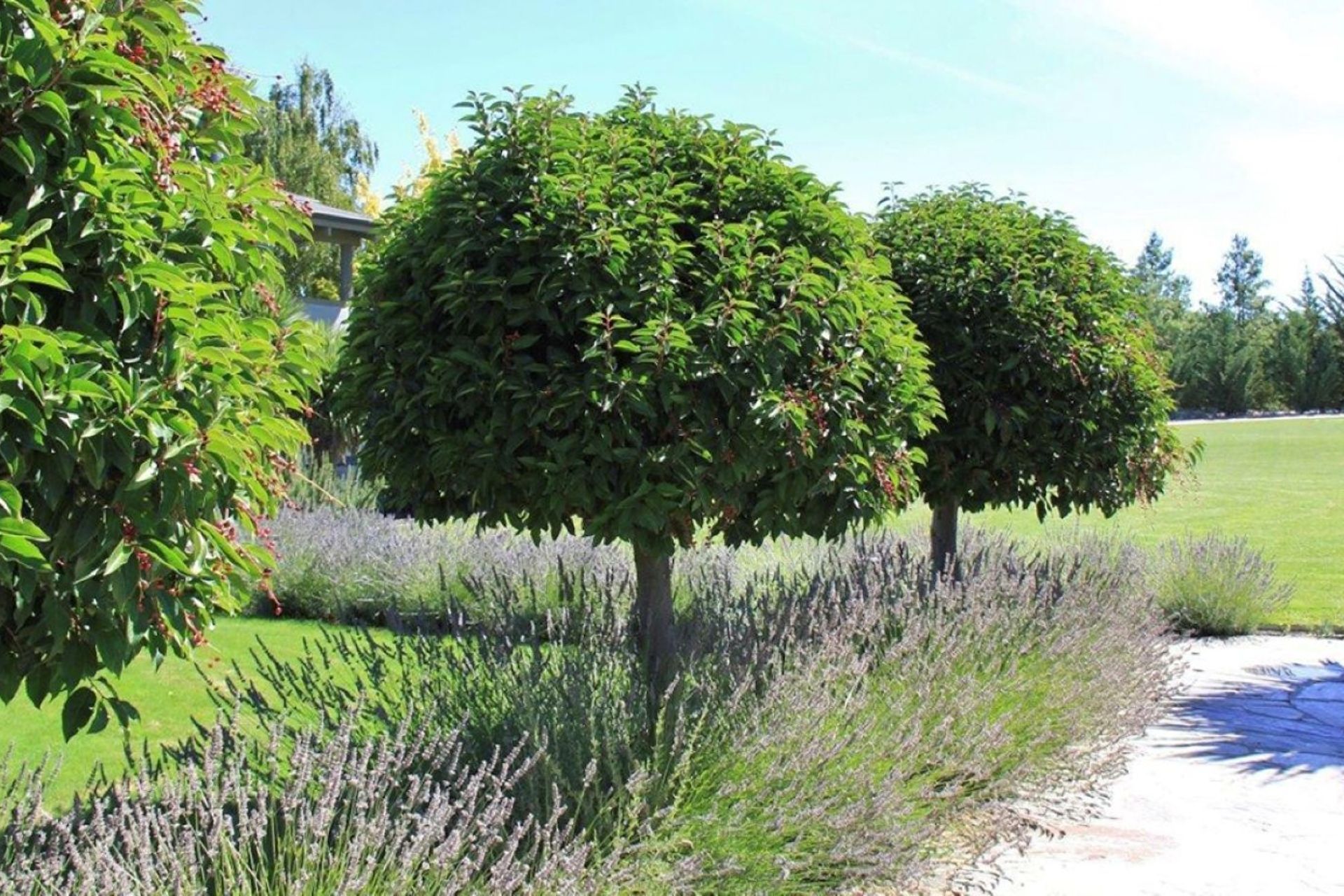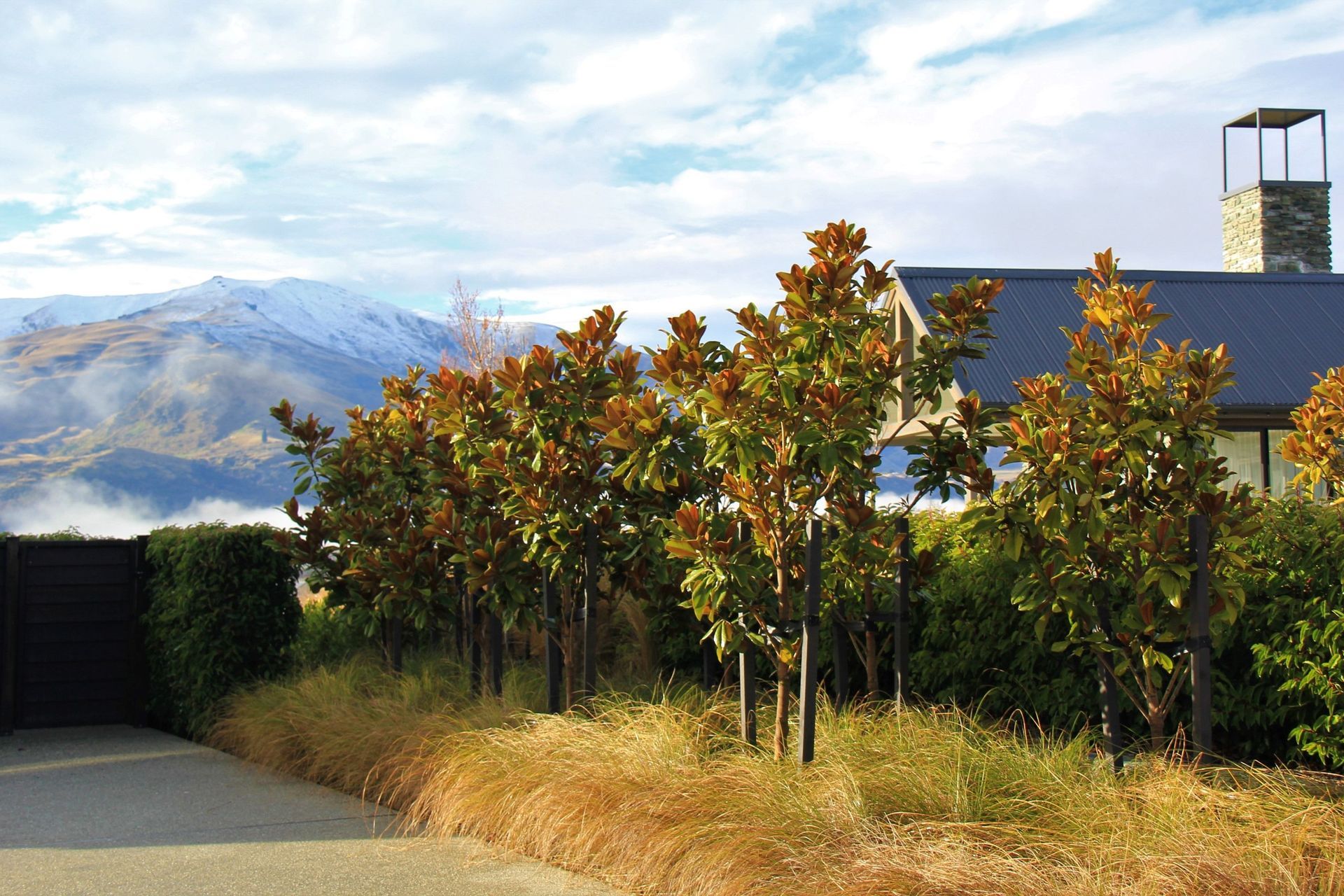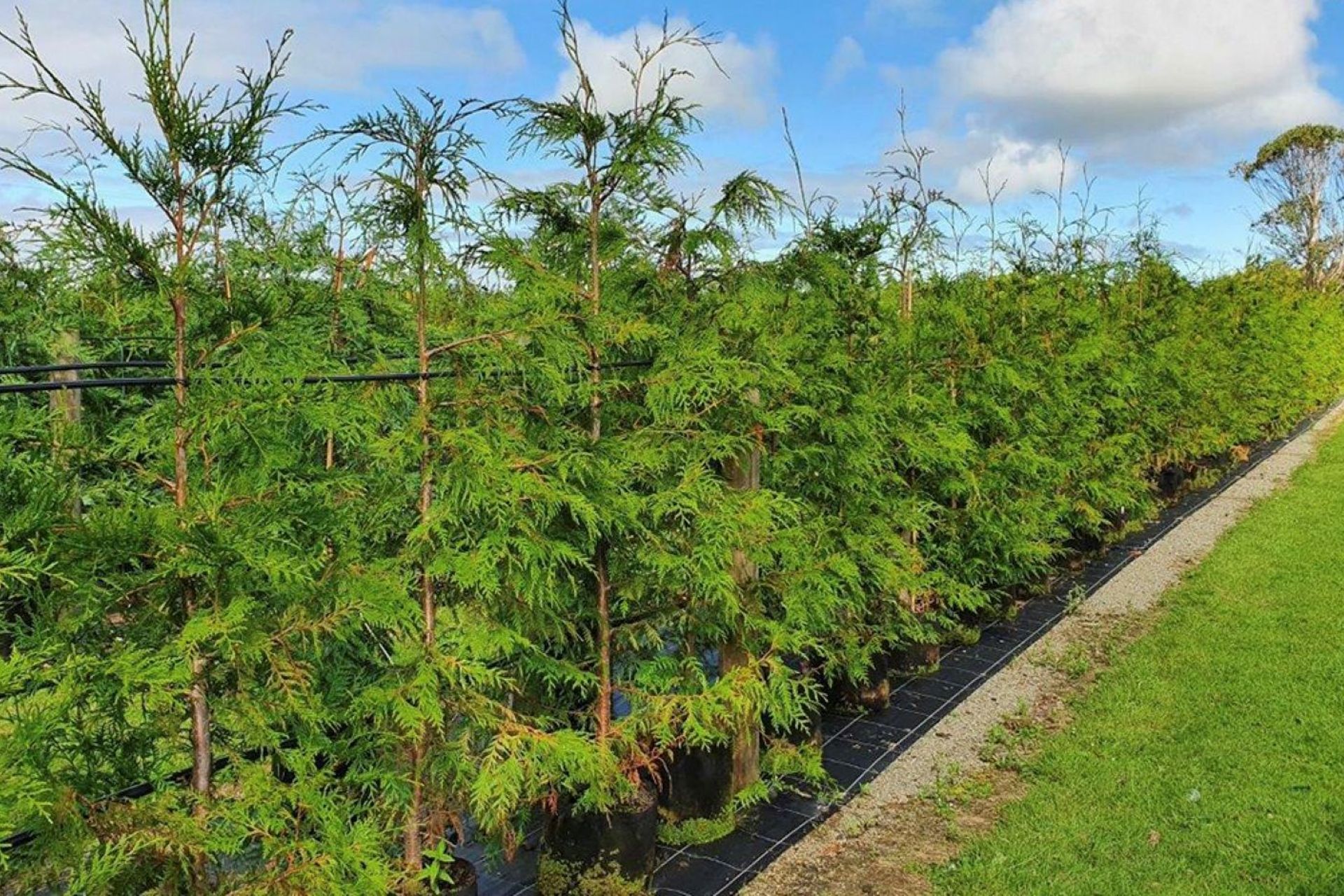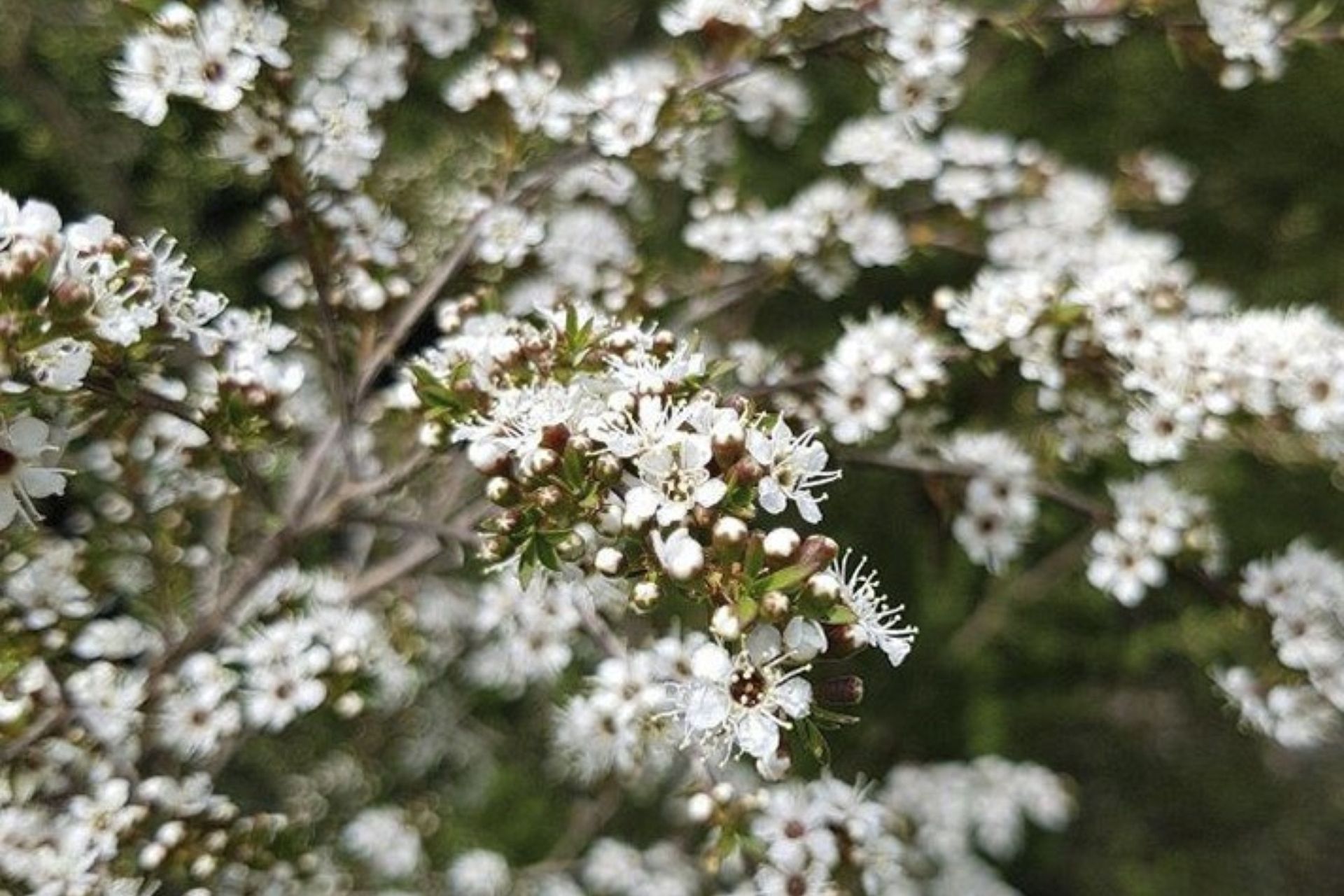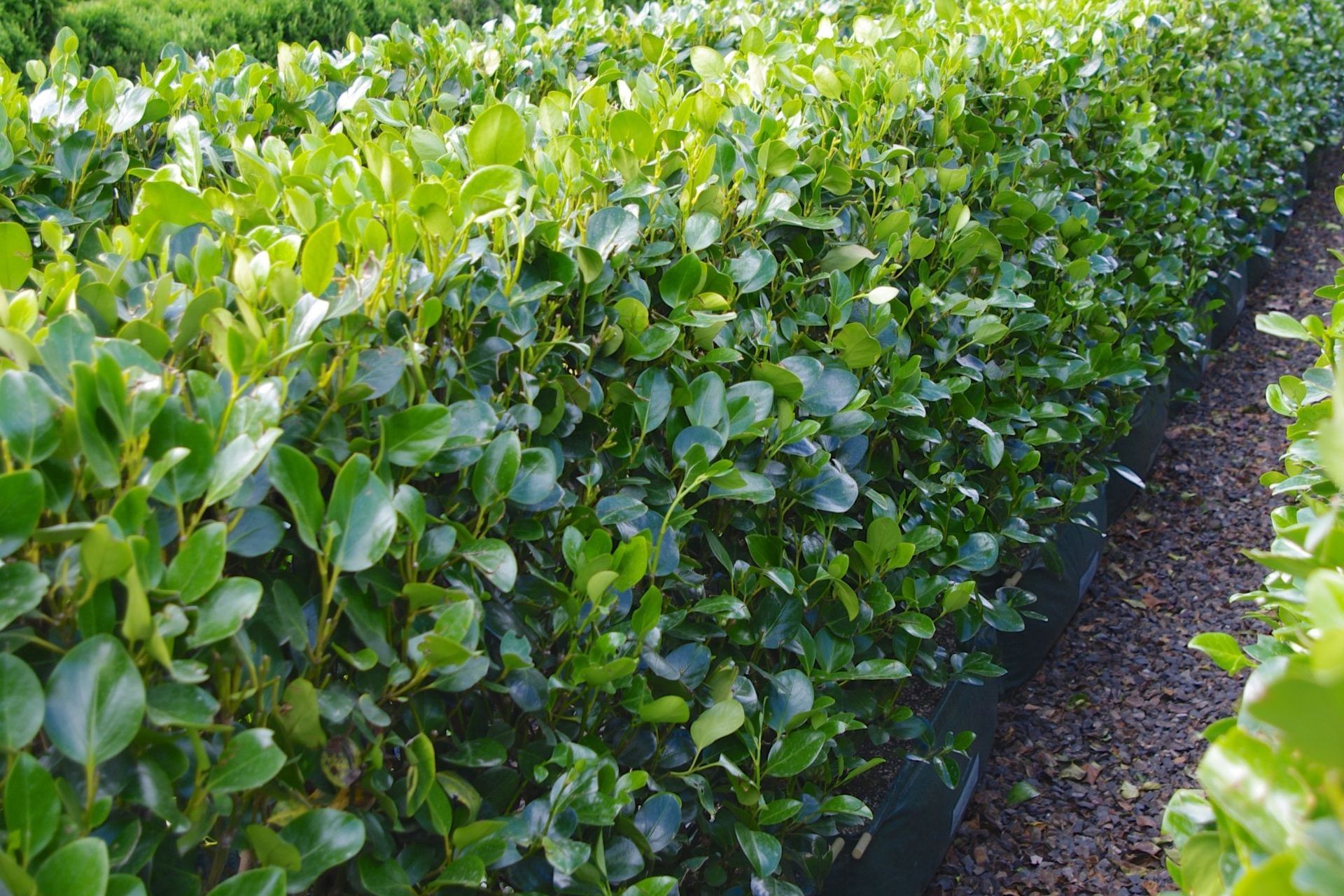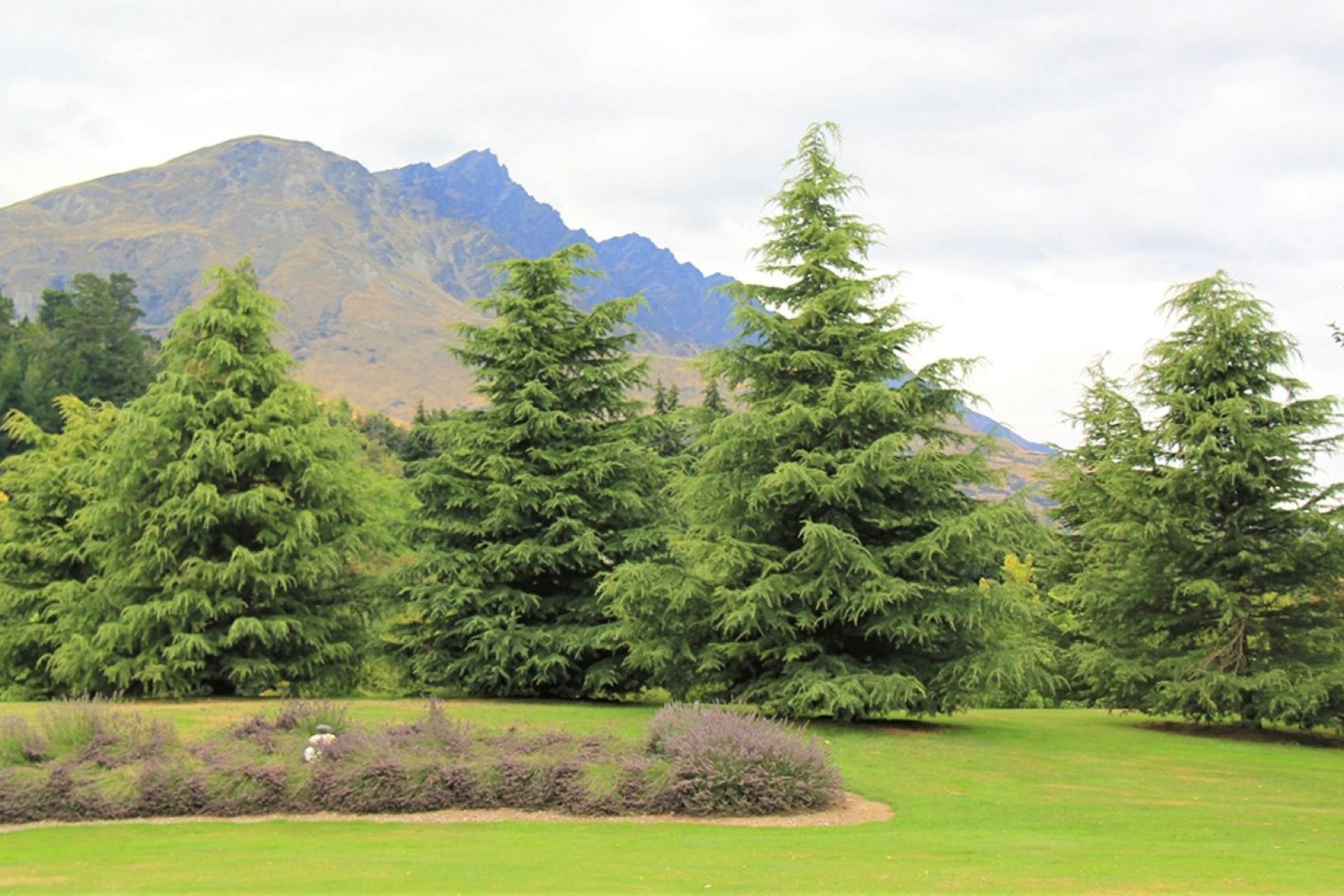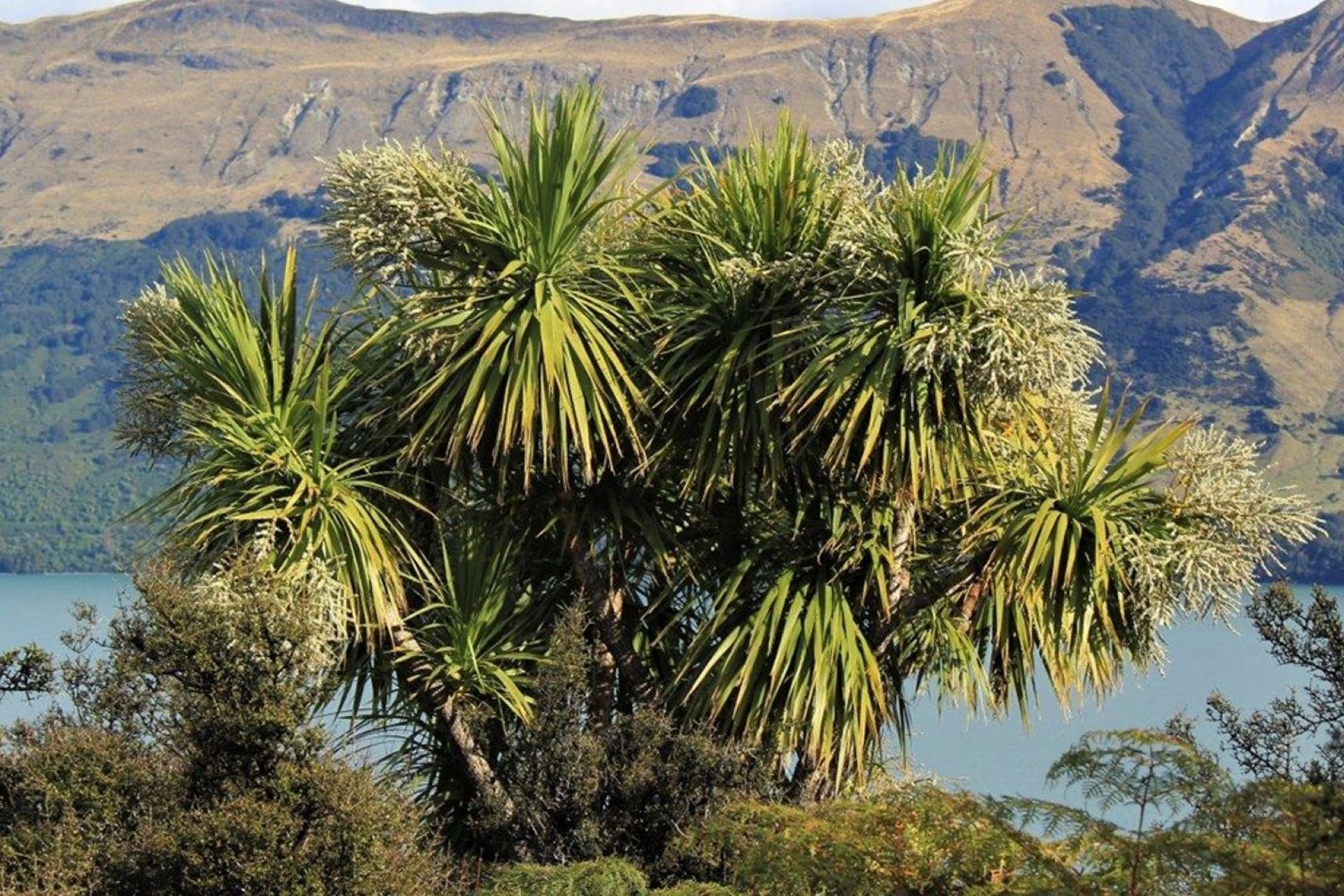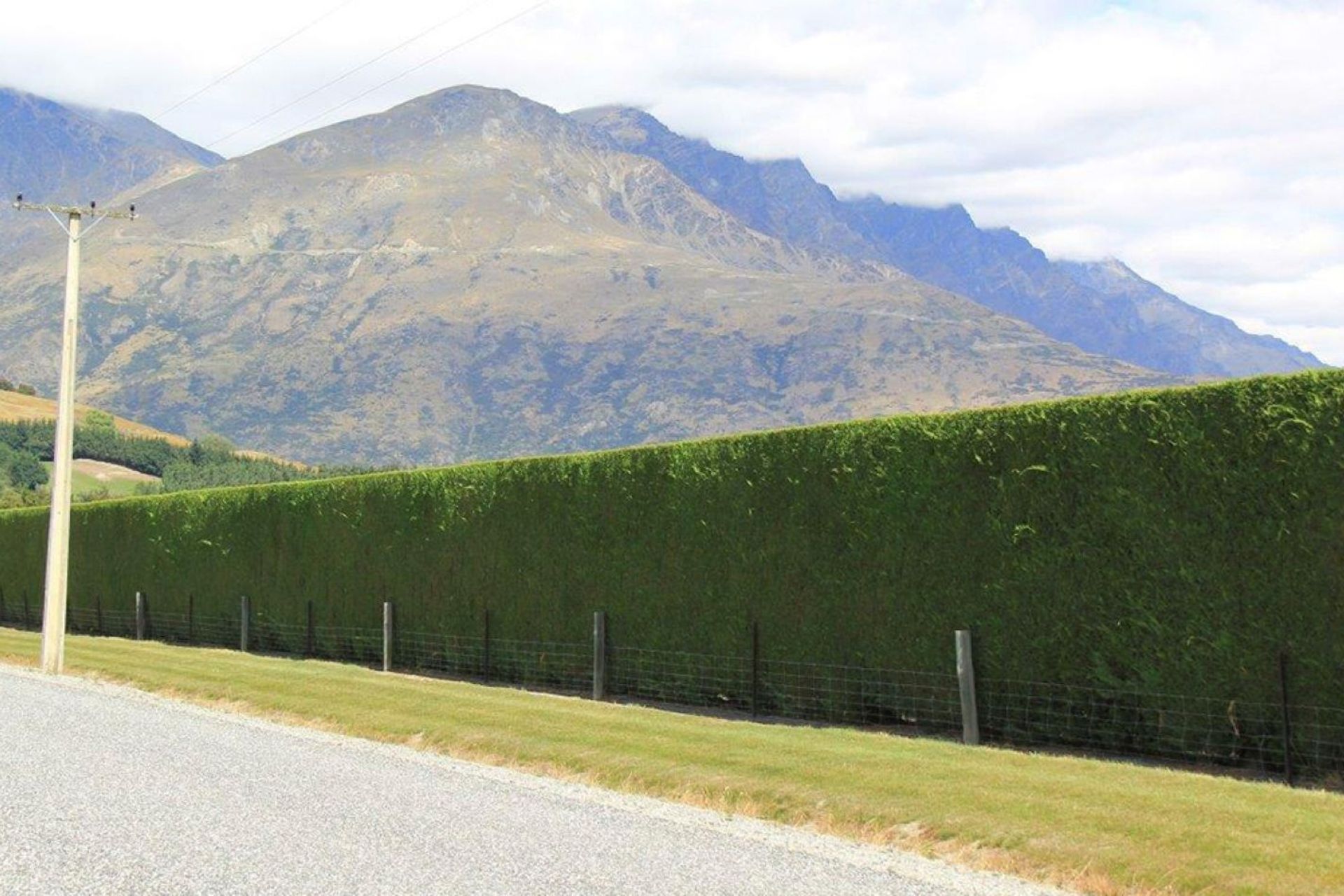10 fantastic fast growing evergreen trees for gardens in New Zealand
Written by
15 February 2024
•
11 min read
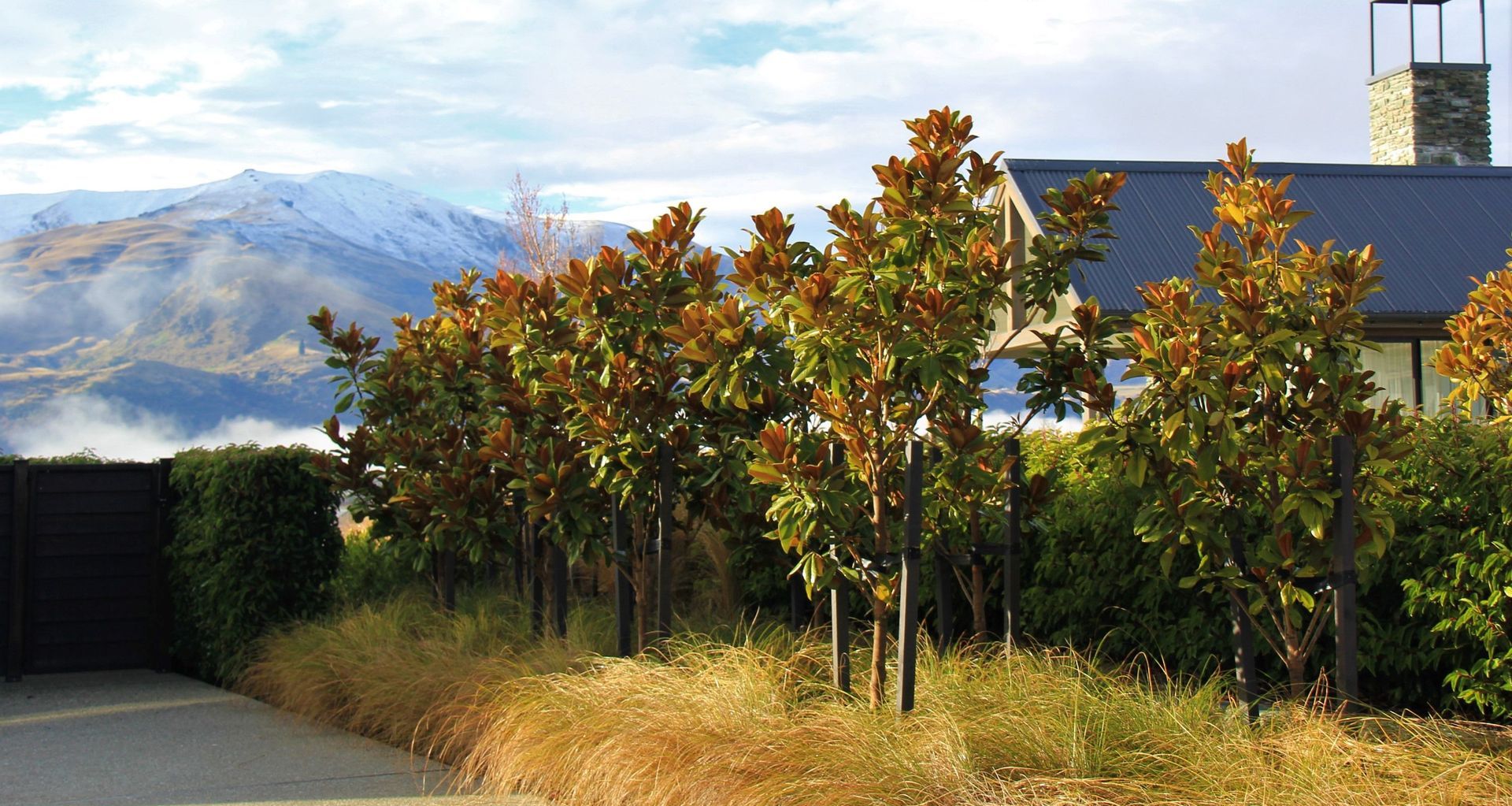
A landscaping or gardening project can be incredibly involved, requiring a lot of time and energy, both of which are in short supply in our busy modern lives. Fast growing evergreen trees provide a quick way to create a garden feature, a natural privacy screen, promote biodiversity and more. No matter what your needs, these recommendations are sure to suit, covering a variety of species that are readily available in this country.
1. Ficus Tuffi
Ficus Tuffi, often used as a pleached screen hedge, is a popular choice for gardens in New Zealand for its aesthetic appeal and practicality. This variety of Ficus is specifically cultivated for its dense, lush foliage and robust growth habit, making it ideal for creating privacy screens or hedges in both residential and commercial landscapes.
Conditions it thrives in
Ficus Tuffi prefers well-draining soil with a neutral to slightly acidic pH. It is adaptable to a range of soil types but flourishes in rich, fertile soils that are kept consistently moist. This plant does well in both full sun and partial shade but adequate sunlight is crucial for optimal growth and foliage density. It is suited to the temperate to subtropical climates found in many parts of New Zealand but is not as frost-tolerant as some other garden plants, so it thrives best in areas where frost is rare or mild.
Growth rate and size
Ficus Tuffi is known for its moderate to fast growth rate, depending on the growing conditions. With adequate care and optimal conditions, it can grow robustly at about 50-60 cm per year.
As a pleached screen or hedge, its size is often controlled through pruning. However, if left to grow naturally, it can reach significant heights. Regular trimming will keep it at the desired height and width, which is typically around 2-3 metres tall when maintained as a hedge or screen for privacy.
2. Prunus Lusitanica (Portugal Laurel)
Prunus Lusitanica, or Portugal Laurel, is a versatile evergreen tree or shrub with a glossy green leathery foliage, and the ability to be shaped through pruning. It's a popular choice for hedges and screens in New Zealand and can also be used as a feature plant. Prunus Lusitanica bears small, fragrant white flowers in spring, followed by red berries that mature to black, adding seasonal interest to gardens.
Conditions it thrives in
Portugal Laurel prefers well-drained soils enriched with organic matter but is adaptable to a wide range of soil types, including clay, loam, and sand, provided they are not waterlogged. It grows well in full sun to partial shade but more sunlight encourages better flowering and denser foliage. It is quite hardy and can tolerate a range of climates, from cool to temperate. It is frost-hardy, making it suitable for colder areas in New Zealand.
Growth rate and size
Portugal Laurel has a growth rate of around 30-60 cm per year, depending on growing conditions and care. It can reach heights of up to 6-8 metres if left unpruned, with a similar spread. However, its size is easily managed with pruning, and it is often kept much smaller in garden settings, especially when used as a hedge or screen.
3. Pittosporum Green Lustre
Pittosporum Green Lustre is a cultivar of Pittosporum, a genus of evergreen shrubs that are highly valued in New Zealand gardens for their attractive foliage, versatile landscaping use, and overall hardiness. Green Lustre is particularly noted for its vibrant green, glossy leaves that form a dense, rounded bush, making it an excellent choice for hedges, screens, and as a foundation plant in garden designs.
Conditions it thrives in
Pittosporum prefers well-drained soils but is quite adaptable to a range of soil types, from sandy to clay. Like many Pittosporum species, Green Lustre can tolerate somewhat poor soils, although it performs best in moderately fertile soil. While full sun encourages more dense and vigorous growth, it will also do well in partly shaded conditions. It is also suited to the temperate climate found in many parts of New Zealand. In coastal areas, it shows good tolerance to salt spray, making it a good choice for seaside gardens.
Growth rate and size
Pittosporum Green Lustre can grow around 30-40 cm per year with proper care. It typically reaches a height of 2-3 metres and can spread similarly, depending on pruning and local growing conditions. Its natural shape is rounded and dense, making it ideal for hedging.
Related article: 9 of the best hedge plants for gardens in New Zealand
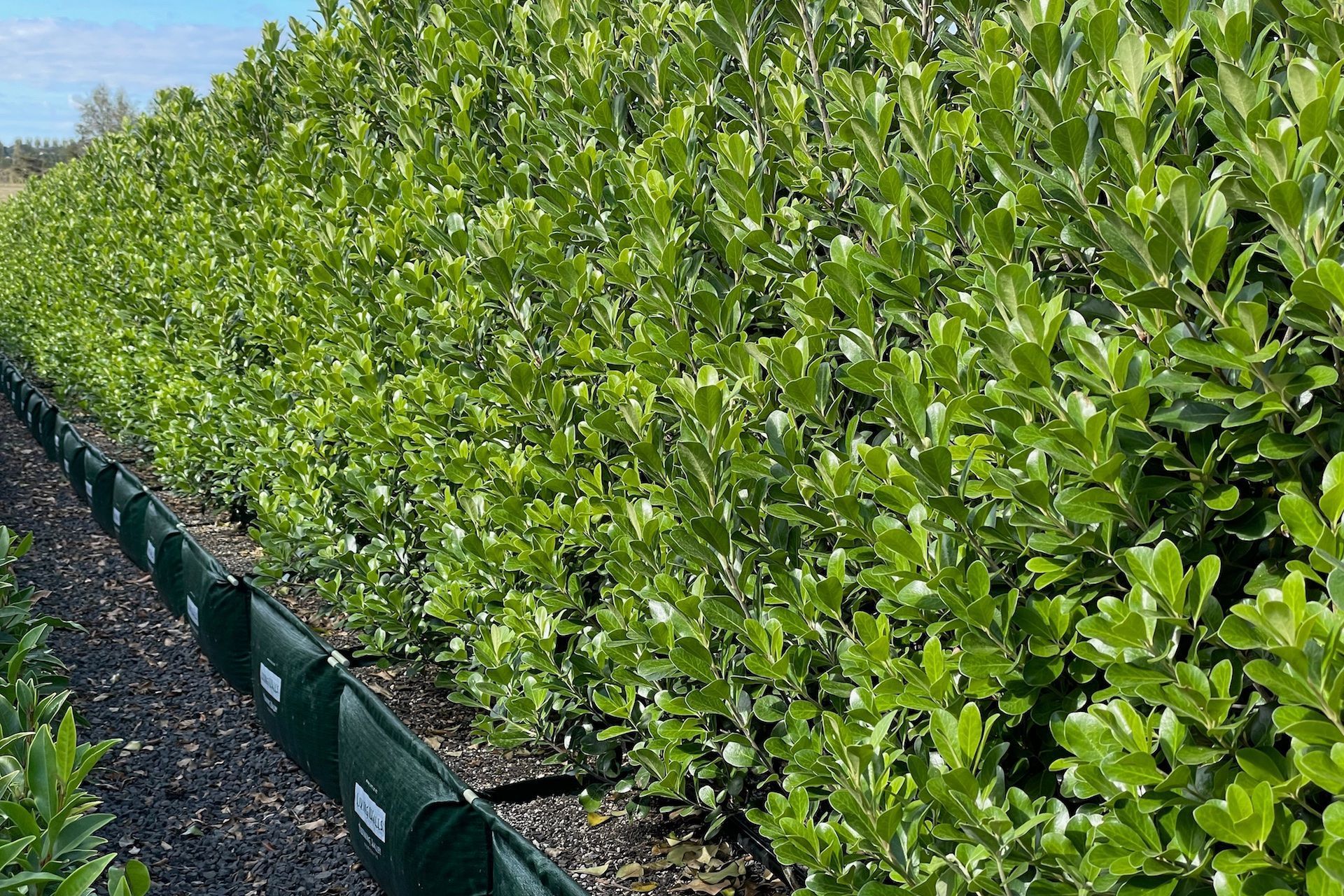
4. Magnolia Grandiflora 'Blanchard'
Magnolia Grandiflora 'Blanchard' is highly regarded and known for its large, dark green glossy leaves with a striking brownish-bronze underside and its fragrant, creamy-white flowers. This particular cultivar stands out for its more compact growth habit and its ability to produce flowers at a younger age compared to other varieties of Magnolia Grandiflora. It's an excellent choice for gardens in New Zealand where a striking evergreen specimen tree with year-round interest is desired.
Conditions it thrives in
It prefers moist, well-drained, acidic soils enriched with organic matter. Full sun is preferable for the best flowering and growth habit, but it will tolerate partial shade, especially in hotter climates. Magnolia Grandiflora 'Blanchard' is suited to the warmer, temperate regions of New Zealand. It is frost-tolerant to a degree but performs best where winters are not too severe. In colder regions, a sheltered position will help protect it from harsh frost.
Growth rate and size
'Blanchard' tends to grow slightly more quickly than some of the other Grandifloras, especially when young and under ideal conditions at around 30-60cm per year. It can reach up to 10-15 metres in height and 6-8 metres in width in a garden setting.
5. Thuja Plicata (Western Red Cedar)
Thuja Plicata, or Western Red Cedar, is an attractive evergreen tree with deep green foliage and a pleasant aroma. Native to the Pacific Northwest of North America, it adapts well to various clients and has become a popular choice in many New Zealand gardens, often used as a shelter belt.
Conditions it thrives in
The Western Red Cedar is very easy to maintain but prefers moist, well-drained soils and full sun to partial shade. It can tolerate a range of climates but tends to excel in regions of relatively high rainfall and humidity.
Growth rate and size
Western Red Cedar is known for its fast growth rate, especially when young and growing under optimal conditions. It can grow up to 60 cm per year in its early years.
It can reach a height of 15-25 metres and have a width of 7-15 metres taking a broad pyramidal shape.
6. Kunzea Ericoides (Kānuka)
Kunzea Ericoides, or Kānuka, is a versatile and resilient native tree of New Zealand. It plays a significant role in the country's natural ecosystem and is increasingly appreciated in gardens and landscapes for its environmental benefits, aesthetic appeal, and traditional uses. Kānuka has a somewhat faster growth rate than Mānuka (a species it is often confused with) and can quickly establish itself in a variety of settings.
Conditions it thrives in
Kānuka is not particularly fussy about soil types and can thrive in both poor and rich soils. It has a notable ability to regenerate land, often being one of the first species to colonise disturbed or eroded sites. It prefers full sun exposure which leads to more vigorous growth and a greater abundance of flowers. It is extremely hardy and can withstand a wide range of climatic conditions, including frosts, making it suitable for many areas across New Zealand. Kānuka is well-adapted to both dry and wet conditions but does best in well-drained sites.
Growth rate and size
Kānuka has a relatively fast growth rate of up to 1 metre per year in its early years, allowing it to quickly form dense stands. It can reach heights of 10-15 metres with some specimens growing even taller under optimal conditions. Its spread can be quite broad, with a dense, bushy canopy.
7. Griselinia 'Ardmore Emerald'
Griselinia 'Ardmore Emerald' is prized for its lush, bright green foliage and its robust growth habit, making it an excellent choice for hedging and screening. Like other Griselinia species, 'Ardmore Emerald' is an evergreen plant that can provide year-round privacy and greenery.
Conditions it thrives in
'Ardmore Emerald' prefers well-drained soils and performs well in a range of soil types. It is relatively tolerant of salt, making it suitable for coastal locations. Full sun encourages denser foliage and more vigorous growth, but it will also grow well in partially shaded areas. It is tolerant of both warmer and cooler temperatures and is moderately frost tolerant.
Growth rate and size
It has a fast growth rate of up to 60 cm per year, making it an ideal choice for gardeners looking to quickly establish a hedge or screen. This cultivar can reach heights of about 3-5 metres if left unpruned, but it can easily be maintained at a lower height through regular pruning.
8. Cedrus Deodara (Himalayan Cedar)
Cedrus Deodara, or Himalayan Cedar, is a majestic evergreen tree renowned for its elegant, drooping branches and attractive, blue-green needles. Native to the western Himalayas, this cedar species has been widely adopted in temperate climates around the world, including New Zealand, where it is valued for its picturesque appearance and adaptability to a range of garden settings.
Conditions it thrives in
Himalayan Cedar prefers well-drained, acidic to neutral soils but is adaptable to a variety of soil types. Full sun is ideal as it promotes the best growth and form but it can tolerate partial shade. It is suited to the temperate climates but is cold-hardy and capable of withstanding light frosts. However, it may need protection from heavy frosts, especially when young.
Growth rate and size
Himalayan Cedar has a fast growth rate, especially when young and growing under optimal conditions growing up to 60-90 cm per year. It can also reach significant heights of 40-50 metres in its natural habitat, but in garden settings, it typically grows to 15-25 metres tall.
9. Cordyline Australis (New Zealand Cabbage Tree)
Cordyline Australis, commonly known as the New Zealand Cabbage Tree, is a distinctive and iconic native tree of New Zealand. Its unique appearance, with a tall, slender trunk topped by a crown of long, sword-like leaves creates a dramatic silhouette. The Cabbage Tree is versatile and hardy, capable of thriving in a wide range of environments, and is often used in both traditional and contemporary landscaping across New Zealand.
Conditions it thrives in
New Zealand Cabbage Tree prefers well-drained soils but is remarkably adaptable, thriving in a variety of soil types, from boggy swamps to dry, sandy soils. It grows best and produces the most vibrant foliage in full sun but can tolerate and adapt to partial shade environments. It is extremely hardy and can tolerate a wide range of climates, including frost, which is why it is so prolific right throughout New Zealand.
Growth rate and size
Cabbage trees can grow up to 1 metre per year in ideal conditions. They typically reach heights of 5-10 metres, with some specimens growing taller. The trunk may also branch out, leading to a multi-headed appearance.
10. Cupressocyparis Leylandii (Green Leylandii)
Cupressocyparis Leylandii, commonly known as Green Leylandii, is a fast-growing, evergreen conifer that is widely used for creating quick, effective hedges and screens. A hybrid between Cupressus Macrocarpa (Monterey Cypress) and Chamaecyparis Nootkatensis (Nootka Cypress), Leylandii combines the best traits of its parent species, including rapid growth and a dense, conical form. It's particularly popular in New Zealand for its ability to provide privacy and wind protection.
Conditions it thrives in
Leylandii is adaptable to a wide range of soil types but prefers well-drained, fertile soils. It can tolerate both slightly acidic and alkaline pH levels. It thrives in full sun but can also grow well in partial shade. While being suited to mild climates it is tolerant of cold conditions as well as coastal salt spray to some extent.
Growth rate and size
One of the fastest-growing hedge plants, Leylandii can grow up to 1 metre per year or more under optimal conditions. Without pruning, it can reach heights of over 30 metres, but it is typically maintained at a much more manageable height of 2-4 metres.
Related article: 11 terrific trees for small gardens in New Zealand
A great selection of fast growing evergreen trees for your garden
As you can see, there are some fantastic fast growing evergreens to consider for your home. Whether it's the Green Leylandii for a quick hedge or a New Zealand Cabbage Tree as part of your landscape design plan, you'll be able to find something that establishes itself and thrives in the short and long term.
